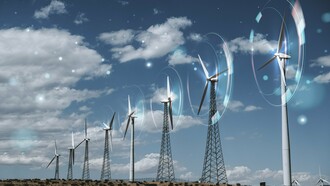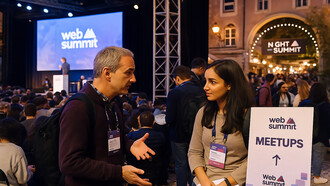Brussels’ regional government is currently revising its radiofrequency radiation exposure limits. This is a pivotal moment, inspired by corporate desires to deploy 5G, the fifth generation of mobile access networks. I propose that we take it as an opportunity to exercise due diligence on 5G’s environmental impacts—and to challenge our ministers to enact regulations that reduce them.
Against the grain of ecological impacts
While our government has committed to reducing greenhouse gas (GHG) emissions by 5% per year, the digital sector1,2 already produces much more than pre-Covid civil aviation3. Worse, the digital industry increases its emissions by 6% per year.4 Due to exponential increases in data traffic5, this trend will likely continue to accelerate. To compensate for telecom corporations’ increases in GHG emissions, other more essential sectors will have to redouble their efforts—and their results.
Manufacturing devices and telecom infrastructure require extractions, energy use, water use—and generate greenhouse gases and toxic waste. Manufacturing pollutes soil, water and air. It jeopardizes local populations’ health6. Tension over mining fuels armed conflicts, particularly in the Democratic Republic of Congo, where mining already is responsible for more murders than any single event since World War II.7
Deployment without an economic foundation
Compared to 4G, 5G can transfer the same amount of data with less energy. However, 5G’s high speed encourages increased usage, especially video, which already accounts for 69% of usage5. Ultimately, this results in much higher energy consumption, the famous “rebound effect”. Analysts8 and operators9 agree that with 5G, mobile operators’ energy use will multiply two to three times by 2025.
Without proof, telecom corporations claim that 5G could enable energy savings in other sectors. In any case, saving energy does not depend on deploying an additional generation of mobile infrastructure.10
To save energy, let’s limit deployment of 5G to private, industrial sites11,12,13 and prohibit its deployment in public spaces. Small businesses and consumers are already largely satisfied with 4G. Its possible saturation could be avoided through various levers14. While some telecoms call 5G a springboard to get us out from our current economic crisis, Bouygues Telecom’s CEO considers this claim unfounded.15 A gap is therefore widening between some corporation’s techno dreams and economic reality.
5G and health
Regarding antennas’ electromagnetic radiation (EMR) exposure limits, the Ghent University and Interuniversity Microelectronics Centre (IMEC) 16 recently looked at exposure to 5G emissions during intensive use. Measurements of Switzerland’s first large-scale 5G network reveal values compatible with the current Brussels limits of six volts per meter (V/m) 17—even when all 5G antennas transmit at full power. This paper demonstrates that industry claims that 5G deployments require higher limits are incorrect.
Further, no environmental agency has assessed 5G’s health risks—even though the World Health Organization categorizes mobile networks’ EMR emissions as “possibly carcinogenic;”18 and thousands of studies demonstrate links between EMR exposure and autism, cancer, wildlife harm and much, much more. By increasing “electrosmog,” 5G will also further impair the 5% of the population19,20 that suffers from electro-hypersensitivity. An increased screen-time may also increase myopia, addiction and anxiety.
Solutions for 5G compatible with the challenges of our century
In this era of both health crises and massive decline in biodiversity21, governments must prioritize limiting EMR exposure risks to living creatures. Switzerland’s strict standards have paved the way for it to deploy 5G under more environmentally and health-friendly conditions. Brussels could enact similar conditions̶ ̶ while maintaining sound economics.
In light of 5G’s exposure levels and the sober objectives that the changing climate imposes on us, governments could therefore:
- limit 5G’s deployment to private industrial sites;
- increase biological protections by revising the current exposure standard. As an example, Brussels’ current six V/m could be lowered to three V/m, as recommended by the Belgian Superior Health Council22;
- control the increase in mobile data traffic. Create a “Responsible Digital Budget” managed by an independent, public agency, financed from the operators' revenues, according to monthly consumption of mobile data per user. Provide tiers that favour consumers who generate the least data transfer. This budget will:
a) raise public awareness about our digital footprint;
b) protect people and wildlife from further EMR exposure;
c) encourage investment in wired infrastructure that provides affordable, reliable and energy-efficient service;
d) discourage Fixed Wireless Access23 (a home and office connection using 4G/5G, an ecological and economic nonsense in the city24); - require mobile operators to provide a detailed annual carbon assessment of their operations and to deliver their services within regional climate objectives (-55% by 2030).
Only by enacting the sober beacons described above will we be able to meet our economy’s connectivity expectations—and address our society’s major challenges: reduce our use of natural resources, reduce greenhouse gas emissions, increase protections for public and wildlife health—and encourage a more humane society.
This article is inspired by a “carte blanche” published in the Belgian newspaper l’Echo on January 8th 2022, co-signed by engineers, philosophers, scientists, medical doctors, organizations and others. (Original article in French).
Notes
1 F. Bordage, Green IT, Environmental footprint of the digital world, 2019.
2 J. Malmodin et al., The Energy and Carbon Footprint of the Global ICT and E&M Sectors 2010–2015, 2018.
3 IEA, Improving the sustainability of passenger and freight transport, 2020.
4 The Shift Project, Impact environnemental du numérique: tendances à 5 ans et gouvernance de la 5G, 2021.
5 Ericsson Mobility Report, 2021.
6 G. Pitron, La guerre des métaux rares : La face cachée de la transition énergétique et numérique, 2018.
7 P. Eichstaedt, Consuming the Congo: War and Conflict Minerals in the World's Deadliest Place, 2011.
8 H. Ferreboeuf, J.-M. Jancovici, La 5G est-elle vraiment utile ?, 09-24-2020.
9 GSMA, 5G-era Mobile Network Cost Evolution, 2019.
10 M. Coma, Green 5G or Red Alert?, 2021.
11 W. Webb, What Might the Demand Be for 5G in Manufacturing?, 2019.
12 A. Martin, L’Echo, Faux espoirs et vraies perspectives d’une économie en 5G, 03-20-2021.
13 Wallonia’s 5G Experts Group, Rapport de la Phase 1 du Groupe d’Experts 5G de Wallonie, 2021 (p.65), undisclosed to the public.
14 W. Webb, The 5G Myth, 3rd Edition, 2019.
15 Sénat de France, Déploiement de la 5G et aménagement numérique de la France - Audition de M. Martin Bouygues, président-directeur général du groupe Bouygues, 2020.
16 IMEC, Primeur voor Vlaamse wetenschappers: elektromagnetische stralingswaarden gemeten op commercieel 5G-netwerk voldoen aan WHO-normen, 2021.
17 In Brussels, limits apply at a carrier frequency of 900 MHz, and must be converted into higher limits at 5G’s frequencies of 3.5-3.8 GHz.
18 IARC, Press Release nb 208, 2011.
19 ANSES, Hypersensibilité électromagnétique ou intolérance environnementale idiopathique attribuée aux champs électromagnétiques, 2018.
20 N. Schreier, A. Huss, M. Röösli, The prevalence of symptoms attributed to electromagnetic field exposure: a cross-sectional representative survey in Switzerland, 2006.
21 Ceballos et al., Accelerated modern human–induced species losses: Entering the sixth mass extinction, 2015.
22 CSS – Conseil Supérieur de la Santé, avis 8519 sur les normes relatives aux antennes émettrices.
23 Use of wireless networks for “fixed” connections is called Fixed Wireless Access (FWA). According to Ericsson, FWA would reach over 20% of mobile traffic in 2025.
24 W. Webb, When Fixed Wireless Access makes sense, 2019.















